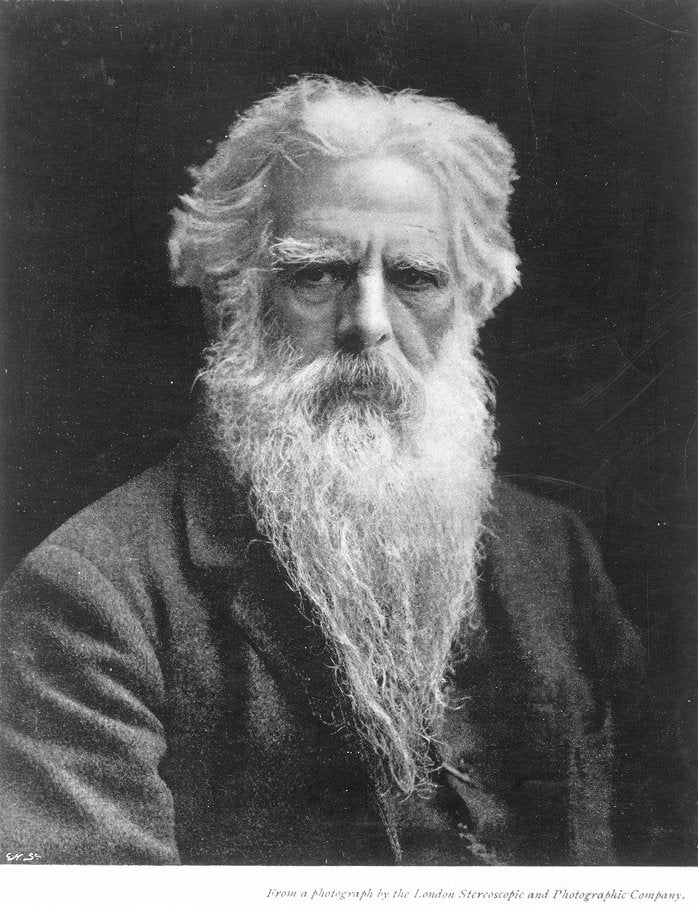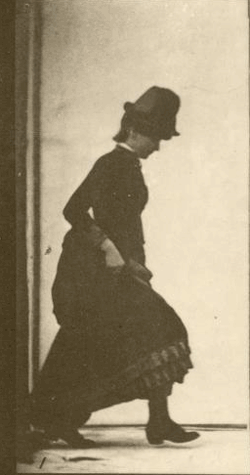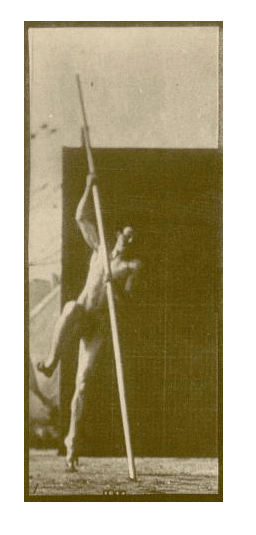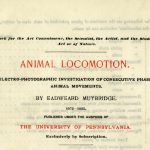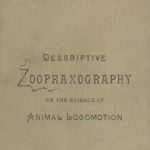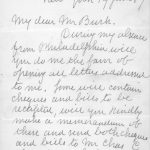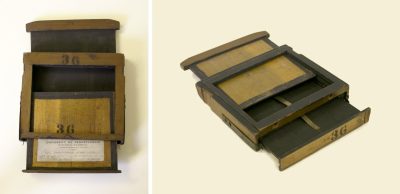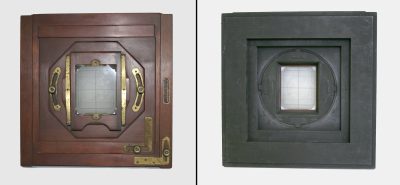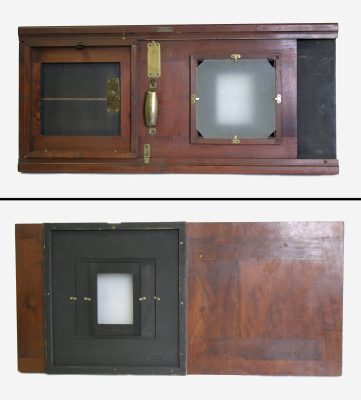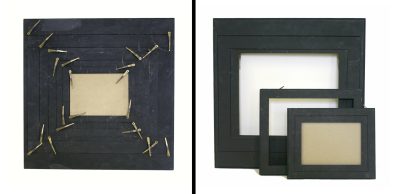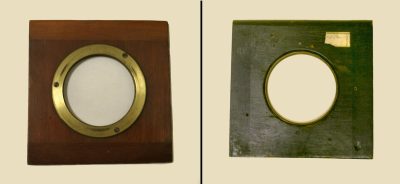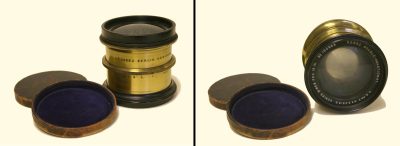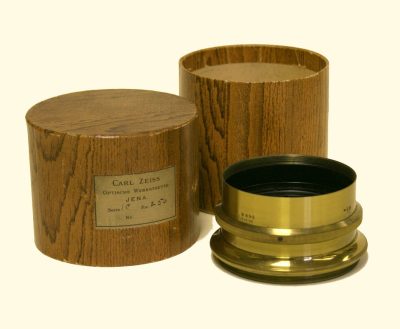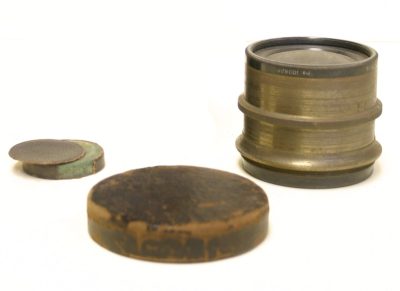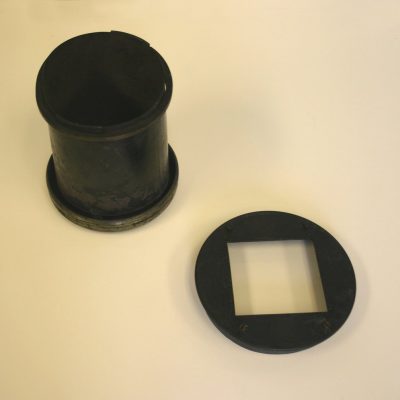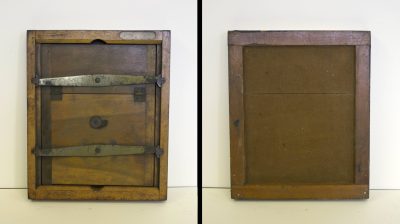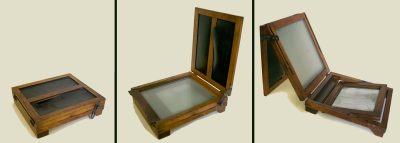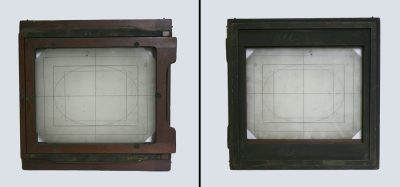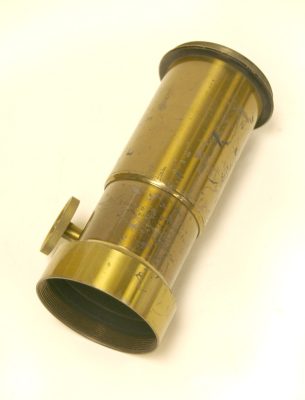On this page:
« Back to the Eadweard Muybridge Collection
« Back to Muybridge’s Animal Locomotion Study: The Role of the University of Pennsylvania
Introduction
The Eadweard Muybridge Collection at the University of Pennsylvania Archives contains 702 of the 784 plates in his Animal Locomotion study as well as related correspondence and printed materials. Also included in the collection are Muybridge’s zoetrope, plate film holder, gelatine plates for making photogravures, camera #20 and wooden shutter, and miscellaneous photographs. Selected items are available for study online, including photographic plates, printed materials, correspondence, photographic equipment.
Plates from Animal Locomotion
Over a hundred of these plates are available for viewing in the University Archives Digital Image Collection.
Printed Materials
| Prospectus and Catalogue of Plates Animal Locomotion: an Electro-Photographic Investigation of Connective Phases of Animal Movements by Eadweard Muybridge J.B. Lippincott Co., Philadelphia (1887) UPT 50 M993, Box 62 FF 2 A total of 781 plates were created of his Animal Locomotion publication. This prospectus provides detailed information about the photographic process, equipment and staff. The catalog carefully records data about each photograph, including the subject, model, costume, type of movement, camera angles and time intervals. |
| Announcement and Subscription Order Form Animal Locomotion: an Electro-Photographic Investigation of Connective Phases of Animal Movements by Eadweard Muybridge J.B. Lippincott Co., Philadelphia (1887) UPT 50 M993, Box 62 FF 5 This announcement describes how subscribers can order and select 100 plates from the 781 plates created by Muybridge as a part of the Animal Locomotion study. The bulk of this announcement provides a partial list of subscribers, including well-known individuals and institutions from around the United States and even Europe. |
| Descriptive Zoopraxography or the Science of Animal Locomotion Made Popular by Eadweard Muybridge by Eadweard Muybridge Published by the University of Pennsylvania; printed by the Lakeside Press, R.R. Donnelly and Sons, Chicago (1893) UPT 50 M993, Box 62 FF 1 The cover and 110 pages of this volume again offer detailed information about the photographic process, equipment, and staff involved in the producing the Animal Locomotion plates. Descriptive Zoopraxography is particularly useful because of Muybridge’s discussion of the scientific and artistic knowledge gained from the Animal Locomotion plates and his description of the zoopraxiscope, a motion picture machine which he invented to project animated versions of the Animal Locomotion plates onto a wall. |
Correspondence
| All corresponence in Penn’s Eadweard Muybridge Collection has been scanned and is available online. These letters came to Jesse Burk and other University administrators during Muybridge’s lifetime. Note that other correspondence regarding Muybridge can be found in the Office of the Recorder Papers also located in the University Archives. These letters can be searched; typed pages are full-text searchable while hand-written pages written in English can be searched for names, dates, and subjects. |
Photographic Equipment
The University Archives extends special thanks to Todd Gustavson, Curator of the Technological Department at George Eastman House, and to Rosina Herrera, from the Photograph Conservation Department of the Museum of Modern Art, for their help in identifying these items.
| Race Track Camera #21
Used by Muybridge in the 1870s. Several of these were placed in a row, each triggered by the breaking of a string. Overall: L: 22″, w: 5.75″, h: 5.8″. Wooden box (7″ long, 5.75″ square) houses a sliding box (with removable glass plate) mounted on 22″ track by means of a brass screw and plate. Every piece of these custom-made cameras would match the corresponding camera. |
|
| Plate holder for Race Track Camera #36
2 views, of front and back. Partially opened to show sliding components. |
|
| Copy Camera
Used to make copies of a positive or negative using transmitted light. The positive goes at one end, the negative in the middle (in the lateral aperture), and the lamp at the opposite end. Opening or closing the bellows resulted in enlarged or reduced images. No manufacturer’s label. |
|
| Rotating Camera Back
2 views, of front and back. Probably for lantern slides. It could fit the Copy Camera and could have been used to make lantern slides for Muybridge’s lectures on Animal Locomotion. |
|
| Lens Board
2 views, of front and back. For the Copy Camera. |
|
| Sliding Camera Back
For the Copy Camera. Manufacturer’s label: Anthony & Scovill. |
|
| Cropping Mask
2 views, of front and back. For the Copy Camera. The nesting feature allowed for the placement of any standard size plate on the plate holder. |
|
| Lens Board #12, for a 5 x 8 inch view camera
2 views, of front and back. |
|
| Back for a View Camera
3 views: front, back and angled. The label “Folmer and Schwing Division” indicates that this item dates from 1907-1917, when Folmer and Schwing was a division of Eastman Kodak. |
|
| Dry Plate Holder
3 views of the holder (with sliding insert partially out): both sides, and with the hinged side open, showing nested cropping masks. |
|
| Lens Board, with flange
2 views, of front and back. |
|
| Lenses, C.P. Coerz | |
|
Lens with leather caps. 2 views. Diameter: 2.75″, height: 2.25″. Goerz double-anastigmat. Series 3, no. 8, focus 19 in., no. 150968. U.S. patent no. 528155. |
|
|
Lens holder, no. 9. Metal painted black. Diameter: 3.3″, height: 7.0″. |
|
| Lens, Jas. W. Queen & Co.
Pantograph Rapid Rectilinear, 31″ focus, 20×24. 8.5 in. high, 5.2 in. diameter. |
|
| Lens, Carl Zeiss
Diameter: 4.8″, height: 7.5″. Label on box: “Carl Zeiss, Optische werksaette, Jena, serie 1C, foc 250”. |
|
| Lens and leather caps, unidentified maker
Diameter: 3.6″, height: 3.8″. |
|
| Lens holder
Two pieces. |
|
| Contact Printing Frame
2 views, front and back of example 1 (10 x 12 in.). Also see example 2 (7 x 9 in.) and example 3 (18.5 x 22.8 in.). In the 19th century, making prints with an enlarger was difficult and time-consuming. The more common method of making prints was by contact between a negative and sensitized paper. Since the resulting print was the same size as the negative, these glass negatives were larger than the negatives used after the improvement of photo enlargers. The glass plate negative (either collodion or gelatin dry plate) was placed on the cover glass of the printing frame, emulsion side up. Sensitized paper was placed on top, with its emulsion side down to be in contact with the emulsion. After the negative and the paper were then firmly pressed together, the printing frame was placed in the sun to develop. From time to time the photographer opened the larger of the two hinged doors on the back check on the progress of the exposure; when he was satisfied, he washed out the unexposed silver with a water bath and then “fixed” the print. |
|
| Retouching Desk
3 views. Note that one side piece is missing from this item. Pencil, graphite, watercolor, paper mask and other materials were applied to the glass plate negative to compensate for the missing reds and oranges. To do this, the glass plate was held in place on the frosted glass panel of the retouching desk. Light from a lamp placed behind the desk was reflected by the mirror to the back of the negative. The cover with two black panels was used to cover the head of the retoucher and to prevent extraneous light coming to the negative. |
|
| Panel with frosted glass
Glass marked with rectangles and oval. 12.5 x 1.25 x 12.75 in. |
|
| Projector Lens, mounted
2 views, of front and back. Another mounted lens can also be viewed. |
|
| Lens, unmounted
Probably used for a projector. Diameter: 2.5″, height: 6.1″. Label: Bausch & Lomb, Rochester NY. |

